

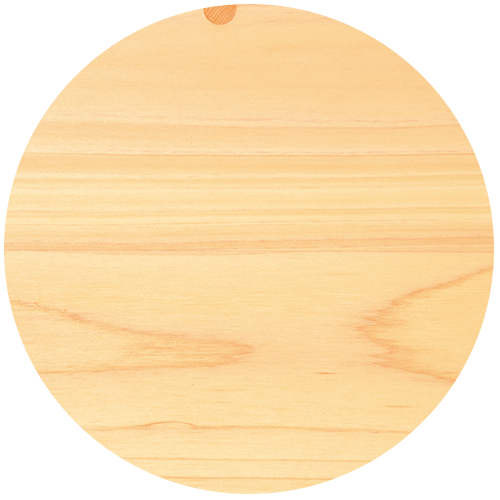
Mainly produced in Japan. Straight and evenly-distributed grains.
Little warp. Easy to be processed.
Excellent in humidity- & water-resistance and in preserving quality.
This wood is used as luxurious building materials for shrines, temples and so on.
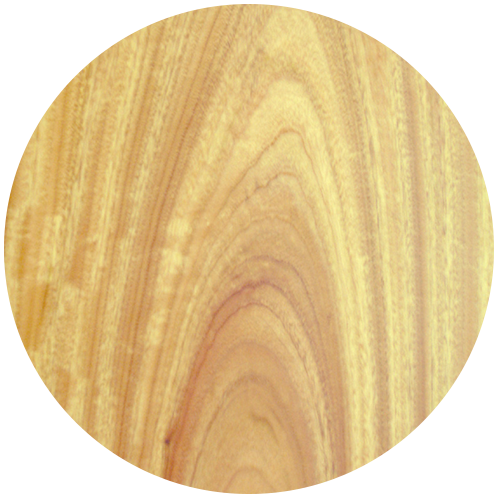
Greyish white or light-brownish yellow grains.
Its core part is brownish-red or dark green.
This wood is used as fixtures, furniture or carving materials.
For example, this wood is used for drawers or clothes chests,
Because this wood keeps insects and worms away.
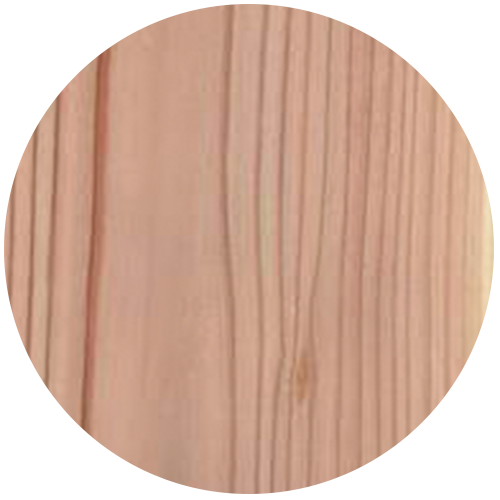
Representative Japanese wood.
This tree grows widely in Japan from North Honshu to southmost Yakushima.
This wood is widely used as building materials. Also for fixtures, packages, utility poles and so many others.
Its academic name is Cryptomeria Japonica, which means “Hidden Treasure of Japan.”
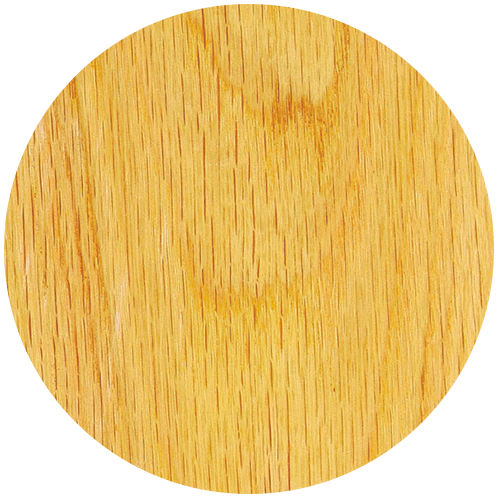
Light-yellowish sapwood and little pinkish red brown core.
Its grains are regularly distributed and its texture is coarse.
Its leaves in autumn are so beautiful and so this tree is also called Red Oak.
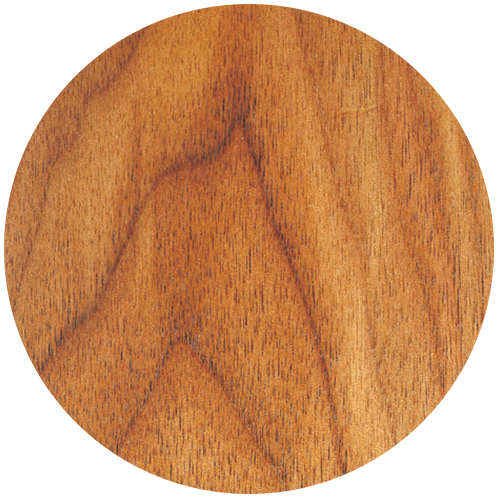
Its official name is American Black Walnut.
Its sapwood is yellowish white, while its core part is dark brown.
This wood is hard, robust and tight-grained.
Walnut has been used as high-quality furniture materials and craft materials
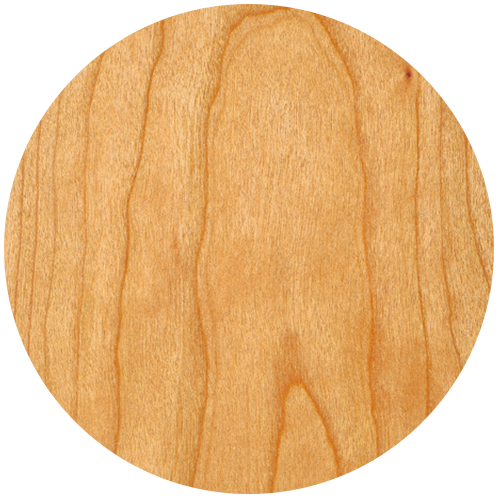
Its texture is very fine & evenly-grained.
Light-yellowish brown. This wood is hard and robust.
The longer this wood is used, the more luxurious it looks just like amber.
This tree is famous for its dark-red cherry fruits, which are bigger than Japanese cherries.
Solid wood is wood cut out from a natural whole tree. This wood is not artificially bonded or otherwise processed.
Unique natural phenomena happen in such natural solid wood such as breakage, cracking, warp and others, which make such solid wood look tasteful. Solid wood is very attractive because it has a nice natural feel and touch.
With no chemicals (like bond) contained, solid wood has been getting lots of attention as sick-house syndrome
A set of thin plates (0.25 or 0.55mm), sliced from a natural tree, are bonded together and painted as decorated panels or plates. Even though this is artificial wooden material, this shows natural grain patterns, depth and taste just like natural wood. Sliced veneer is the highest grade among all the decorated wooden plates.
This sheet is based on Printed Plywood. Printed Plywood is coated with strong EB (Electron Beam).
As a result, its surface has become very strong against dirt, flaws, and/or scars.
This sheet is easy to clean and so stays beautiful for a long period.
This is based on Printed Plywood. Printed Plywood is coated with poly-urethane-based synthetic resin.
This Plywood costs too much and may turn a little yellowish as the time goes by.
However, Poly Urethane Plywood Resin is hard & very excellent in adherence and durability.
It is also strong against solvents, water and heat.
This is based on Printed Plywood. Printed Plywood is coated with Poly-Ester-based synthetic resin.
This Plywood is weak against impact and so much care is needed.
However, Poly-Ester Plywood is strong against wear and water.
This Printed Plywood is pasted with decorative wood pattern sheet which looks real ones.
So, this Printed Plywood looks like a real natural wood.
This Plywood is weak against flaws and water.
However, this Printed Plywood looks nice and costs less.
Plural thin plates (1.50 mm), sliced from a natural tree, are bonded together into plywood.
This Plywood is excellent in durability. This Plywood can be processed into long wooden materials.
So, more and more Laminated Plywood has been used as building materials.
MDF is one of the molded plates named Fiber Board, made of wooden fibers.
Lots of wooden chips are finely cut, steamed & cooked and fibrillated, bonded by synthetic resin and molded into a plate shape. MDF is not water-resistant or robust against bending. However, its surface feels smooth and MDF is easy to be processed. Plus, MDF has little warp or cracking and homogeneous quality.

Oil coating tends to be weak against wet or dirt and it is a little hard for us to maintain oil-coated items.
However, any coating film is not formed, and so we can enjoy a pleasant wooden feel.
We use coating oil by Livos, German Natural Coating Oil maker, in all our oil-coated products.
 We use Poly-Urethane Coating which is based on isocyanate groups reacted by polyol.
We use Poly-Urethane Coating which is based on isocyanate groups reacted by polyol.
This coating forms a stable film on the product surface, and so this coating is excellent in hardness, water & chemical resistance. Plus, this coating feels smooth and is easy to maintain.
LEGNATEC’s Urethane Coating shows natural wooden appearance.
Unless otherwise specified, the size indication on our website and catalogues is millimeter-based.
Our size codes are as follows: W (width), D (depth), H(height), SH (sheet height), AH (arm height),
φ(circle’s diameter), T (thickness of table top plate).
In case that no size codes are indicated, the numerical specifications means 【W(width) x D(depth) x H(height)】.
In case of any irregularly-shaped product, its size indication shows the size of the biggest (largest) part in its width, depth and height respectively. Sizes of any projected part such as a knob or handle to drawers or a door are not included in the size indication. The sizes of an actual product may a little differ from those indicated in our (web) catalogues because of the nature of materials used or installing environment (humidity and temperature).
VOC (Volatile Organic Compound) is one of the causes of Sick House Syndrome.
VOC is contained in old types of bonds and paints. LEGNATEC always uses much safer bonds and paintings in which VOC is extremely restricted. Plus, almost all the materials used as solid wood, fiber boards and other kinds are ranked as “F☆☆☆☆” rated by JIS. This rank means the least dissipation of formaldehyde.
Wooden products of even identical type show different colors, grains or textures, if such products are made of natural woods (solid woods or veneers). Especially, in case of products made of natural solid woods, they may show any wooden knot, bark pocket or sapwood. Your understanding on these characteristics is highly appreciated before your purchase.